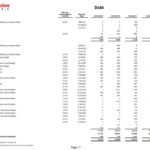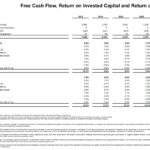Contents
Thermo Fisher Scientific's annual revenue of ~$23B is nearly double that reported in FY2011. This growth has been achieved through a series of acquisitions.
While there are several tailwinds supporting management's 3 - 5% annual growth projections there are various short-term headwinds.
This article looks at whether Thermo Fisher is currently fairly valued and whether it would be a worthwhile addition to the FFJ Portfolio.
Summary
- Thermo Fisher has a dominant position in the Medical Laboratories and Research segment of the healthcare industry with annual revenues of ~$23B.
- It has an industry-leading presence in high-growth / emerging markets; ~21% of its annual revenue is derived from these markets.
- There is the possibility that the Chinese government could ramp up their retaliatory tariffs on goods imported from the US thus impacting results from one of TMO’s high-growth / emerging markets.
- The low interest rate environment over the last several years has aided Thermo Fisher’s rapid growth through acquisitions.
- Growth through acquisition comes with risks and TMO’s Net Acquisition Related Intangible Assets and Goodwill are now ~1.65 times Shareholders’ Equity.
Introduction
Becton Dickinson (NYSE: BDX), a company in which I have held a position since February 17, 2009, announced on September 6 that it had signed a definitive agreement to sell its Advanced Bioprocessing business to Thermo Fisher Scientific (NYSE: TMO). This business combines a strong technical services program with a variety of peptones that enhance cell culture media formulations to improve yield and reduce variability in biopharmaceutical applications.
This announcement has prompted me to look at TMO as a potential investment for the purposes of increasing my exposure to the Healthcare sector.
In reviewing TMO, it appears it has ample opportunities for growth; annual revenue is ~$23B but its addressable market is ~$150B and annual projected growth is 3 – 5 %.
It is the largest supplier of research instruments and consumables and is among the industry leaders in nearly every product category with its product catalog found in a significant percentage of research labs throughout the world.
TMO has certainly grown considerably in recent years.
 TMO is positioned to take advantage of various tailwinds in that it has an industry leading presence in high-growth/emerging markets.
TMO is positioned to take advantage of various tailwinds in that it has an industry leading presence in high-growth/emerging markets.
Source: TMO – Analyst Meeting – May 23, 2018
Much of TMO’s growth has some by way of acquisitions. This has resulted in a considerable change to TMO’s balance sheet.
As at December 31, 2009, TMO had Net Acquisition Related Intangible Assets of ~$6.337B, Goodwill of ~$8.983B, Long-Term Obligations of ~$2.064B, and Shareholders’ Equity of ~$15.431B. In essence, Net Acquisition Related Intangible Assets and Goodwill were almost equivalent to TMO’s Shareholders’ Equity.
Fast forward to December 31, 2017, and TMO had Net Acquisition Related Intangible Assets of ~$16.684B, Goodwill of ~$25.29B, Long-Term Obligations of ~$18.873B, and Shareholders’ Equity of ~$25.413B. Net Acquisition Related Intangible Assets and Goodwill totalling ~$41.974 is now ~1.65 times TMO’s Shareholders’ Equity.
Looking at the most recent schedule of TMO’s Debt and Other Financing Arrangements, we see that TMO has certainly taken advantage of the low interest rate environment over the past several years!
Source: TMO - GAAP/Non-GAAP Reconciliation and Financial Package – July 25 2018
Fortunately, TMO’s all important Free Cash Flow (FCF) has grown consistently in recent years (2010 – 2017): ~$1.2B, ~$1.4B, ~$1.7B, ~1.7B, ~$2.2B, ~$2.4B, ~$2.7B, and ~$3.5B.
Investors interested in investing in TMO should take into consideration the impact of a rising interest rate environment given that TMO has relied so heavily on low interest debt.
Another point to consider is that as an aggressive acquirer, its GAAP and non-GAAP results are often impacted by significant non-GAAP adjustments.
Source: TMO - GAAP/Non-GAAP Reconciliation and Financial Package – July 25 2018
Please click here to read the complete version of this article.
Members of the FFJ community can access reports I generate on high quality companies which add long-term shareholder value. In an effort to help you determine whether my offering is of any value to you I am pleased to offer 30 days' free access to all sections of my site. No commitments. No obligations. That's 30 days from the time you register at absolutely no cost to you!







